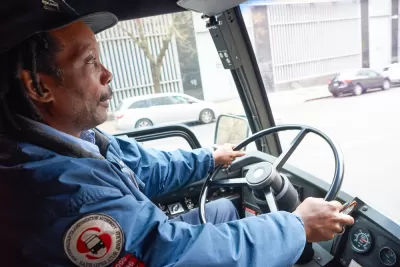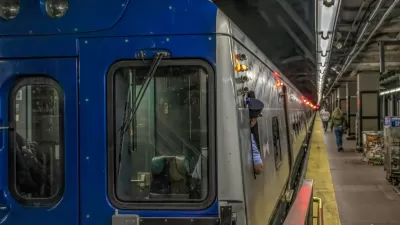An analysis of California transit employees found a high rate of burnout among operators who face unpredictable work schedules, high housing costs, and occasional violence.

A new report from UCLA's Institute for Transportation Studies highlights the causes of the persistent labor shortage in public transit at agencies across California.
As Melanie Curry explains in Streetsblog California, the report finds that while better pay is an important factor for attracting and retaining transit workers, other obstacles include “a culture of exhaustion, burnout, and physical injuries” perpetuated by “understaffing, unpredictable and complicated scheduling practices, overtime requirements, long commutes, and too-short, sometimes rare breaks.”
The report notes that part of the problem stems from “the divide between operations vs capital funding,” which makes it easier for agencies to access capital funding — for building new lines or buying equipment — than operational funding, which supports worker wages and maintenance costs.
The report’s authors suggest changes such as streamlining hiring practices, reducing split shifts, providing bathrooms and bathroom breaks for workers, and limiting fare enforcement duties for operators.
FULL STORY: To Recruit Transit Workers, More Than Higher Pay Is Needed

Trump Administration Could Effectively End Housing Voucher Program
Federal officials are eyeing major cuts to the Section 8 program that helps millions of low-income households pay rent.

Planetizen Federal Action Tracker
A weekly monitor of how Trump’s orders and actions are impacting planners and planning in America.

Ken Jennings Launches Transit Web Series
The Jeopardy champ wants you to ride public transit.

Crime Continues to Drop on Philly, San Francisco Transit Systems
SEPTA and BART both saw significant declines in violent crime in the first quarter of 2025.

How South LA Green Spaces Power Community Health and Hope
Green spaces like South L.A. Wetlands Park are helping South Los Angeles residents promote healthy lifestyles, build community, and advocate for improvements that reflect local needs in historically underserved neighborhoods.

Sacramento Plans ‘Quick-Build’ Road Safety Projects
The city wants to accelerate small-scale safety improvements that use low-cost equipment to make an impact at dangerous intersections.
Urban Design for Planners 1: Software Tools
This six-course series explores essential urban design concepts using open source software and equips planners with the tools they need to participate fully in the urban design process.
Planning for Universal Design
Learn the tools for implementing Universal Design in planning regulations.
Heyer Gruel & Associates PA
Ada County Highway District
Institute for Housing and Urban Development Studies (IHS)
City of Grandview
Harvard GSD Executive Education
Toledo-Lucas County Plan Commissions
Salt Lake City
NYU Wagner Graduate School of Public Service





























